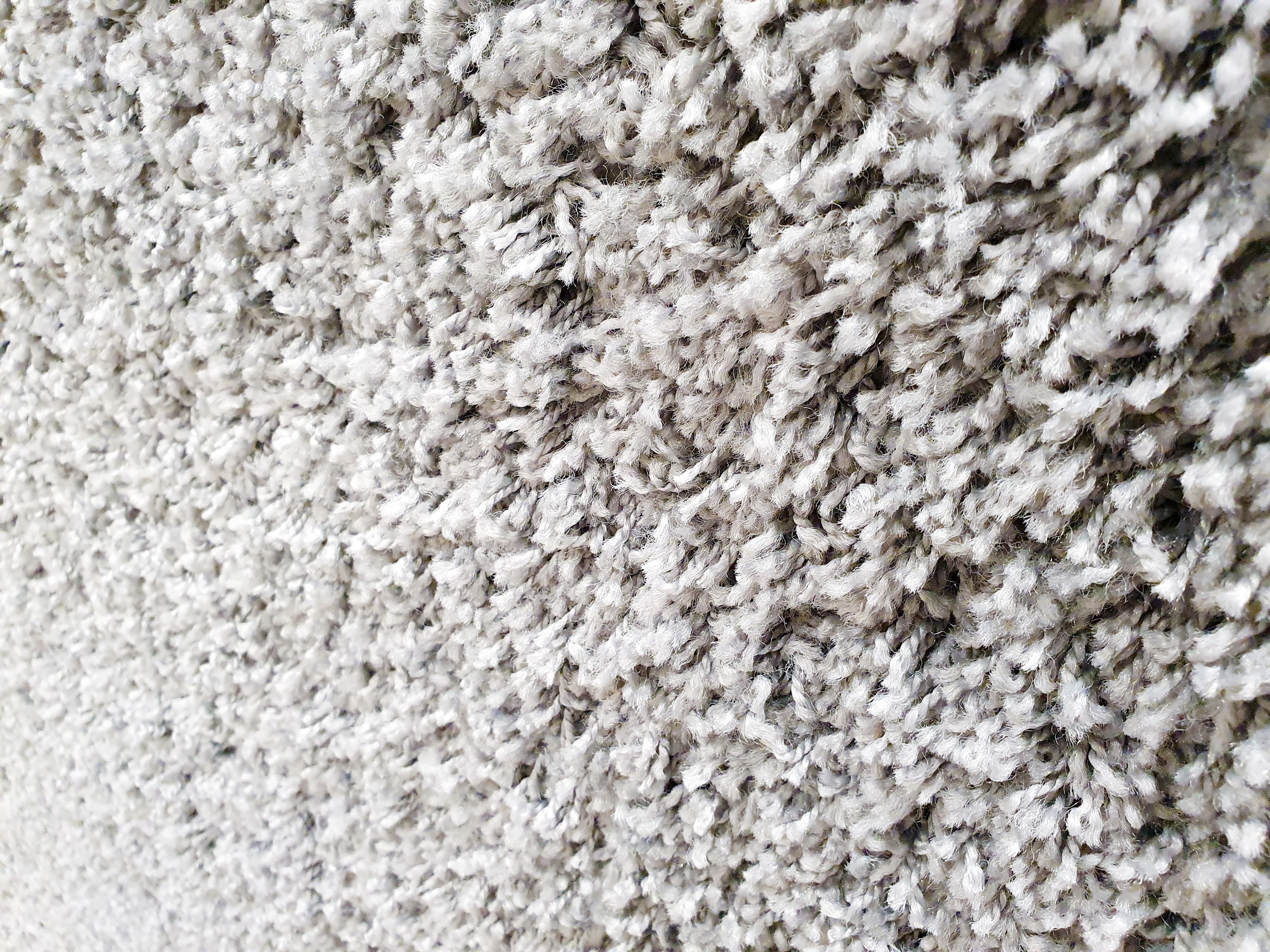
We’ve all been there. We step into our cousin’s house or our friend’s apartment and it feels like we are walking on a cloud. It must be a plush carpet, right? Well, not quite. Believe it or not, it’s actually what’s underneath the carpet that makes it squishy and comfortable. Carpet pads come in all different shapes and sizes and, of course, costs. Let’s break it down.
What is Standard?
You’ve seen it before. That greenish, grayish, purplish pad that gets left behind at construction sites and remodels. A normal, standard pad is what’s called “rebond urethane foam.” Basically, imagine a bunch of little pieces of foam that’s scrapped from furniture and automotive manufacturing chunked together and then cut into a flat sheet. Voila! Rebond foam carpet pad.
This rebond foam comes in different thicknesses and densities. Thickness, of course, is the overall thickness of the product. Generally speaking, most rebond foam carpet pads are about 3⁄8” thick. The density, however, is how squishy and bouncy the padding is. If you’re looking for a firm, tight pad, you might think of getting a higher density. If you want a squishy feel, get a lower density. But there’s a catch! Lower density carpet pads also wear out and break apart much quicker, simply because there is less foam chunked together. It will feel good for the first couple of months, but after a couple thousand steps it begins to feel like there is almost no padding there at all. Most standard carpet padding is offered at six pounds. Long story short, if you’re shopping for new carpet, most folks are going to offer you a six-pound, 3⁄8” inch carpet pad as their standard. While that is a good choice, it will wear quickly and you might be disappointed you didn’t spring for a better pad later on.
Here at BlvdHome, we start you out at an 8 pound-1⁄2” pad. This pad, while still rebond foam, will offer a bit more comfort to its standard counterpart, and better yet, it doesn’t cost the customer anymore.

Let’s Talk Upgrades
Sorry to be the bearer of bad news, but that standard pad is not the super-soft pad that is in your cousin’s house. To get that bouncy, squishy feel, a pad upgrade is absolutely necessary. The first upgrade available leaves that rebond urethane foam behind and upgrades you to memory foam. Memory foam pads spring back better than their rebond counterpart, meaning you won’t see furniture impressions for nearly as long. In addition, memory foam pads often come with a moisture barrier attached to the top.
There are two different constructions of memory foam pads. First, there’s the rebond memory foam pad, constructed very similar to its urethane foam counterpart. Chunks of memory foam are pushed together, giving it a similar look to that of the standard pad we mentioned earlier. But the substitute of urethane to memory foam adds instant comfort and durability.
Rebond memory foam pads will usually have moisture barriers attached, which keeps spills from entering the pad. This is beneficial for two reasons:
- It keeps liquid out of the foam particles. If liquid interacts with the foam, the foam begins to disintegrate, weakening the pad.
- It keeps odors and stains on the surface, making them much easier to clean away.
The one drawback to rebond memory foam pads is it often acts much like a memory foam bed in that it will be a bit firm throughout the first few months. However, once those chunks of foam loosen up, the pad gets softer and squishier over time, making your pad more and more comfortable.

The other type of padding is 100% foam sheet padding. This includes no rebonding of foam pieces, moisture and odor guards on both sides of the padding, and it lays down soft and bouncy. That padding in your friend’s house? It’s this one here. While it’s often the most expensive upgrade, it comes with incredible benefits. In addition to it being cloud-like, it will also keep your carpet looking newer longer because it is the only carpet padding produced that won’t break down before your carpet does.
What Pad to Get
Depending on the lifestyle, carpet pad upgrades are hardly ever a bad idea. Standard carpet pads are ideal for contractors and property owners who are producing quick builds or have renters. The costs are low and the padding is usually always available. Rebond memory foam pads are perfect for just about everyone. They’re comfortable for the kids, easy to clean for the parents, and the upgrade cost is minimal. The 100% foam sheet padding is the best of the best. While there may be a notable cost increase, the benefits are well worth it, as it is the Taj Mahal of carpet padding.

What To Watch Out For
Be careful about the thickness and density of padding. Six-pound 3⁄8” pads are enticing because of the price, but they break down incredibly fast. Look for padding that is at least 1⁄2” and eight pounds (hint: almost all memory foam pads are 1⁄2”). Be wary of the cheap stuff. Some cheap memory foam upgrades have a moisture barrier that crunches when you walk on it. Test out the upgrade before you buy it, as most companies will have examples laid out on the floor. One final helpful hint, look for carpets with a soft or plastic backing. This will reduce the friction between the carpet and the pad, keeping the pad softer longer.
